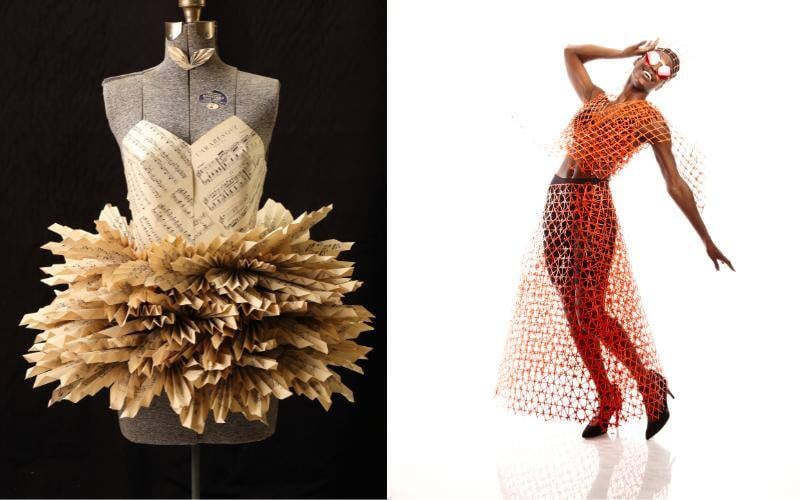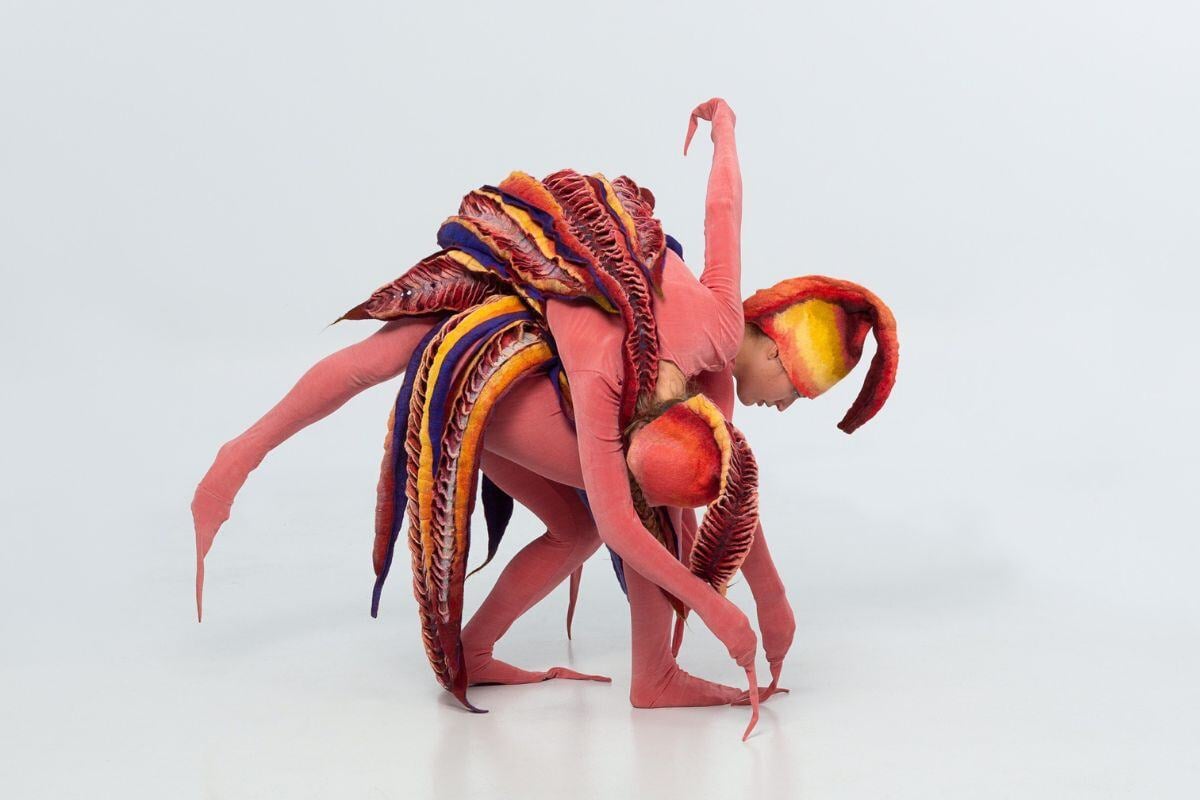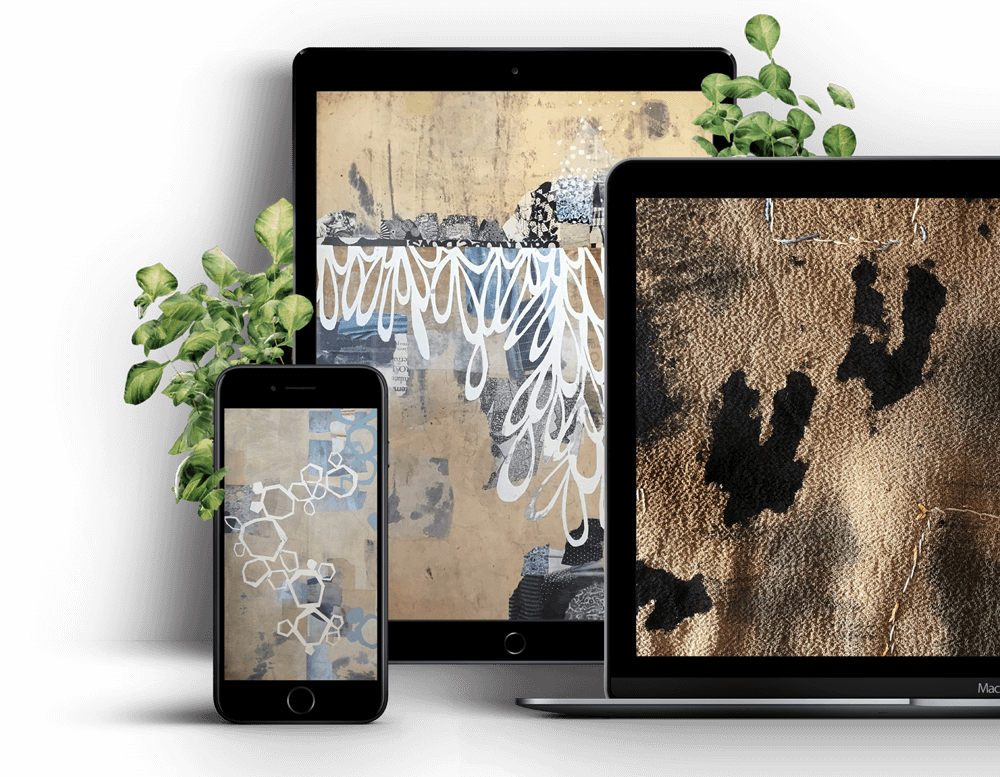Gizella Warburton: What Isn’t There
Artist Gizella is as interested in what isn’t there as much as what is. She took Fibre Arts Take Two on a journey into her visceral artmaking.
Gizella Warburton is a fine artist whose practice is infused with texture, intuition and reverence. Mark making is an intrinsic part of Gizella’s practice, shadowed, scratched, stained, scarred, pierced, wrapped, stitched, woven, and burned.
Her work has raw and simple materiality with layers of detail that are revealed or hidden as light and shadow pass across and through the surfaces. She describes her relationship with making as visceral.
Gizella feels where the work emanates from, as much as she can see it. It’s no surprise that Gizella has exhibited globally from Paris and Italy to the US and China. And in addition to making exhibition work, she has been commissioned to deliver numerous creative learning projects in partnership with galleries, museums, and heritage organisations.
Having studied printed and woven textiles at Manchester Metropolitan University, Gizella has experimented with printmaking, felting paper making and woven techniques, resulting in simple and confident contemporary textile and mixed media pieces. Fibre Arts Take Two enjoyed talking to Gizella about the visceral nature of her art.
Patchwork beginnings
“I started by just building very simple layered stitched collage pieces,” explains Gizella on how she discovered vessels, “Almost like patchworks that reference a lot of things that resonate with me like ancient crafts, and worm cloths. I love the raw simplicity of them and the fact they were absolutely imbued with the hand of the maker, the dust of their travels. I felt they were very powerful.”
Gizella’s inspiration was also highly external, “Things came out of noticing,” she says, “I live in a rural area, so landscape and the seasons, particularly in the changes, really get under your skin and into your sensibility. I was responding to light and space and shadow and what I was absorbing.”

What isn’t there
To Gizella, vessels are so much more than a simple object. Rather, they present a sense of symbolism, “There is a real thing about containment,” she says, “and what isn’t there as much as what is there and what they symbolise. I wanted to take on my layered wrapping into three-dimensional form, and again, that containment, that sense of presence.”
Despite her poignant interpretations, Gizella’s art did not appear overnight, “It evolved over many years. I tried different ways of doing it. I had a sort of an idea in my head of how I wanted it to feel. And so it’s a case of getting there. But the vessel, I think, is just hugely symbolic.”
Forms or Flow
Gizella’s process may vary, but time is always essential, “Sometimes I begin with forms,” she says, “and sometimes, I can focus on the flow. You get drawn in different directions, but they do take months. There is a process, and things need to rest in between before you can do the next bits that you want to add or take away. You can’t rush them… they will not be rushed.”
Taking time means Gizella has more than one piece gestating at a time, “I also have works in progress,” she says, “I get to a point, and then they will just be in my studio. And then, I will pick them up and start them again and again. I think a lot of it is where you are with yourself as well as what you’re working on and why.”
Burning
Gizella uses burning as one of her primary ways of mark-making, “The burning came when I first started creating vessel forms,” she says, “but I wanted to juxtapose them with a ground because I collect and gather and also I love wood and weathered wood. I was looking for some old large boards. Where my studio is, there is a guy who works around the place. I asked him if he had any old floorboards, and he came up with the most amazing old boards. He dragged them out of the bottom of a bonfire because he was just about to burn them. They were huge, and I had to clean them up, but I think the symbolism of saving them from the fire was quite interesting, and it permeated into why I started. It’s quite a primal thing burning. It’s an elemental thing.

Intimate breath
In creating her vessels, Gizella landed on one of the simplest yet elegantly intimate methods, “It’s a very physical process. You are very intimately engaged with the material. It’s a very tactile thing. When I was beginning to think about vessel form that I felt reflected what I was doing, I tried several different things. But in the end, I found that actually, a very simple balloon format is a really good starting point because it’s so simple.”
The application of her own breath creates a delicate intimacy for Gizella, “The other interesting thing, for me, was that because you are inflating the balloon with your breath, it’s actually a very intimate process. The fact you are often having to use several forms, and you’re supporting it at various stages, it’s a really quite visceral thing and connects to the way I evolved the work.”
Led by the piece
Part of the visceral process for Gizella is never knowing quite how a piece will work out, “You’re doing the physical making, and I have an idea where it might be going, but I am led by the piece I’m working on because they will all bring their own characteristics, and you respond to what’s happening as much as have a fixed plan. It’s not really a conscious thing. I never set out to think, ‘right, I’m going to do this many’, and then work out, ‘well, what am I going to do?’”
The work just comes
When asked what she is most grateful for, Gizella says she is honoured to make a living as an artist.
‘When I think to myself: ‘Gosh, I’ve been doing it this long, I do sell work, and people collect my work is lovely, people respond, but that isn’t the reason you do the work. The work just comes.”

About the artist
Gizella Warburton studied Printed and Woven Textiles at Manchester Metropolitan University, and Her current practice has its origins in stitched cloths. Though undoubtedly rooted in ‘embroidery’ and ‘patchwork’, Gizella experiments with and refines processes in a search to describe the way elements have imprinted themselves in my mind.
Fragments of materials are brought together similarly to collage or assemblage, with tiny holding stitches to capture layers. Gizella creates gestural marks with threads, paint, charcoal, and other media, and printmaking, felting, papermaking, and woven techniques may be involved.
She has always found ancient and humble textiles and primitive vessel forms particularly compelling; the raw and worn simplicity of the weaving, stitching, binding and repairing bear the patina of our human histories. Gizella is drawn to materials that suggest a fragile balance, strength and legacy yet susceptibility to wear and tear, permeating them with their own intrinsic tactile qualities.
Unique objects include framed, hanging and sculptural artworks and installations. Developments include works on slate and weathered wood grounds, printed and woven elements, and sculptural forms and vessels.
Join Our Newsletter
OUR YOUTUBE CHANNEL
View our interviews and more on our Youtube channel!
OUR FACEBOOK GROUP
Join our Community and stay updated with our upcoming announcements!



.jpg)
